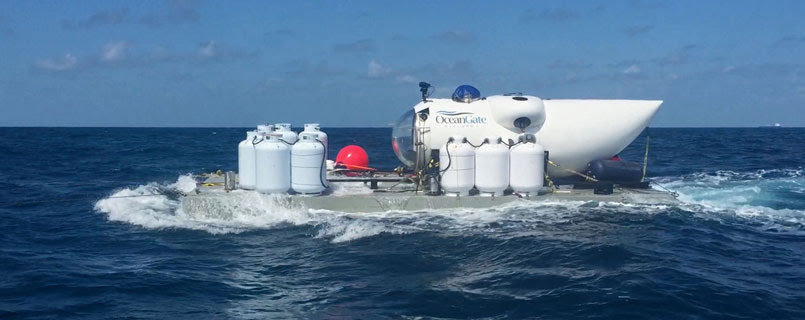With the Titan submarine still unaccounted for on Wednesday, June 21, news of the chaotic history of Ocean Gate, the company that promises to take passengers to the wreck of the Titanic, is beginning to surface.
It’s all about internal battles over the safety of the submersible, warnings from some thirty experts in the development of “manned underwater vehicles”, legal action by former “underwater tourists” and critical testimonials piling up.
“When we sign the release [of liability], death is mentioned three times on the first page,” Mike Reiss, an American TV producer who took part in one of Ocean Gate’s expeditions aboard the Titan, told the BBC.
Mentions that also surprised American journalist David Pogue, who had been invited in November 2022 to make a descent to the Titanic to report for CBS.
The adventure hadn’t been a smooth one, and left a mixed aftertaste for the renowned technology journalist. “There’s a MacGyver feel to the finishing touches on this submersible. I mean, they’ve used construction pipes as ballast, and to navigate the Titan they’re using video game console joysticks,” mused David Pogue.
Communications with the surface also ceased to function once the submersible reached a depth of almost 4,000 meters… which wasn’t supposed to happen, since it’s the surface vessel that has to guide the submersible to ensure safe progress.
An American couple was so unhappy with their experience with Ocean Gates that they sued Stockton Rush, Ocean Gate’s CEO (who is one of the people aboard the currently missing Titan), for a refund in February 2023. It has to be said that they were unable to descend in search of the famous Titanic wreck because Ocean Gate had to carry out additional technical tests on its Titan.
In other words, at the end of 2022 and beginning of 2023, just a few months before this final expedition, doubts remained as to the reliability of the submarine, which Ocean Gate had been developing for ten years.
Stockton Rush’s ambition to inaugurate a new form of “extreme tourism” at a depth of 4,000 meters had already come up against some obstacles to dreaming in circles. Starting with an internal detractor.
In January 2018, David Lochridge, Ocean Gate’s Director of Marine Operations, was handed the keys to the Titan for a final inspection after the engineering team had completed its work. The underwater industry veteran’s report was highly critical.
So critical, in fact, that Ocean Gate’s management decided to let this bird of ill omen go. A dismissal that was challenged in court. This legal battle gave rise to a major debacle concerning David Lochridge’s reservations about the Titan’s safety.
At the heart of this expert’s remarks was the strength of the hull, which had never been tested to a depth of 4,000 meters. It hadn’t even been designed for that, since the company that had manufactured the submersible’s bow had only guaranteed its strength to a depth of 1,300 meters. For a guarantee to a depth of 4,000 meters, an additional charge had to be made, which Ocean Gate had refused to do.
These tests were all the more essential in David Lochridge’s eyes, as the Titan was the first submersible to descend to this depth with a carbon-fiber composite hull rather than a steel one. A material that “can be lighter and harder than steel, which can improve the submersible’s seaworthiness. But it’s also a material that can be prone to sudden failure under pressure”, explains technology site Techrunch. And the pressure is very high at a depth of 4,000 meters.
“The paying passengers would not be aware or informed of this experimental design, the lack of non-destructive testing of the hull, and the fact that dangerous flammable materials were being used inside the submersible,” summarizes David Lochridge in his lawsuit against Ocean Gate.
The criticism was dismissed out of hand by the American company, which maintained that David Lochridge was just looking for revenge, and in any case had no engineering training.

But Stockton Rush refused to listen, and in a blog post on the official Ocean Gate website, published a year later, he argued that most accidents are caused by human error. “Consequently, focusing solely on the technical certification of the vessel does not address the operational risks,” he stresses.
In an interview with Smithsonian Magazine, he also justifies his refusal to submit to the inquisitive eye of an independent body by ideological opposition to too many rules: “It’s a terribly safe industry because there are all these regulations. But there hasn’t been much innovation, no… because of all these regulations”, says the man who describes himself as an innovator first and foremost.
In fact, he has made sure that he has no obligations to regulators since Titan is legally registered in the Bahamas and does not operate in U.S. territorial waters. In other words, its activities are not subject to any obligations under US law. Ocean Gate thus seems to have been an extension into the realm of underwater adventure of the Silicon Valley philosophy, as summed up by the slogan “Move fast and break things”.



Comment here